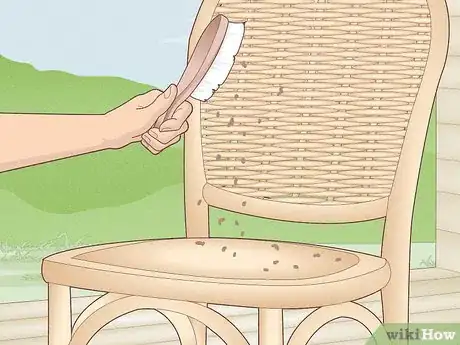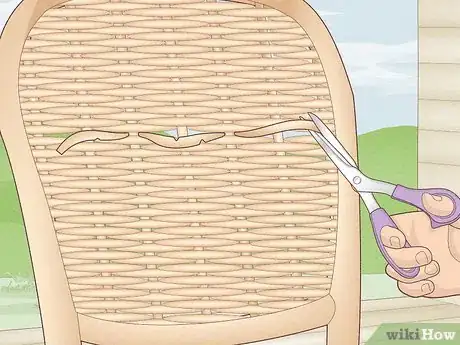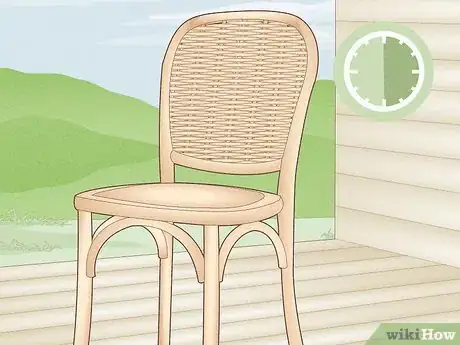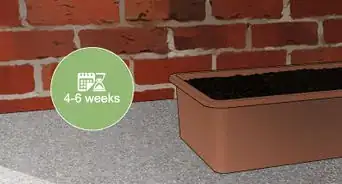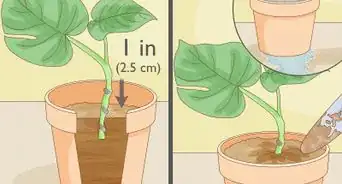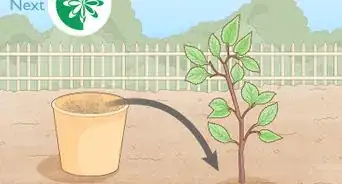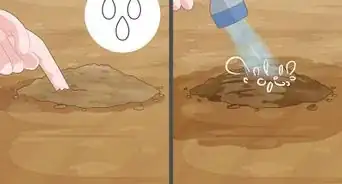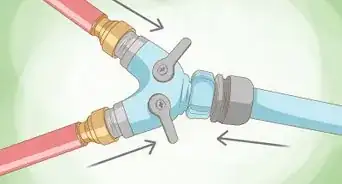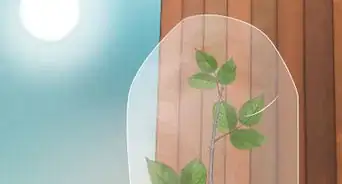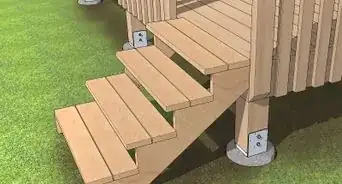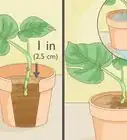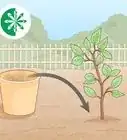This article was co-authored by wikiHow staff writer, Janice Tieperman. Janice is a professional and creative writer who has worked at wikiHow since 2019. With both a B.A. and M.A. in English from East Stroudsburg University, she has a passion for writing a wide variety of content for anyone and everyone. In her free time, you can find her working on a new crochet pattern, listening to true crime podcasts, or tackling a new creative writing project.
There are 13 references cited in this article, which can be found at the bottom of the page.
This article has been viewed 25,772 times.
Learn more...
Rattan garden furniture adds a simple but elegant, woven touch to your outdoor living space. While this furniture is pretty low-maintenance, the woven material can unravel or break over time. Not to worry—both wooden and synthetic rattan are easy to repair, and both can be fixed in the same way. If your furniture only has a few loose ends or wrappings, refer to the first method in this guide. If some sections of your furniture need a little extra TLC, skip ahead to the second method.
Steps
Loose Ends and Wrappings
-
1Brush off any dirt on the furniture's surface before making repairs. Grab a bristled brush and clean off any dirty sections of your furniture. Focus especially on any sections you’ll be fixing up, so your repairs look clean and seamless.[1]
-
2Wipe down real, wooden rattan furniture with dish soap and water. Stir 1⁄4 c (59 mL) of dishwashing soap with 1 US gal (3.8 L) of water.[2] Then, dip a soft rag into the sudsy mixture and wipe down the entire surface of the furniture. Clean any hard-to-reach crevices with a toothbrush.[3]
- Don’t get your rag sopping wet—if you get your rattan furniture too wet, you might damage it.
Advertisement -
3Tighten loose rattan pieces with a screwdriver to get rid of holes. Sometimes, loose rattan weaving looks warped, creating “holes” in your furniture. Locate the specific strands of rattan material that look loose and warped. Then, slide the end of a flathead screwdriver beneath the end of the strand. Lift up the strands with the screwdriver—this will tighten the material, completely removing the “hole.”[4]
-
4Secure any loose ends back into place with super glue. After a lot of use and time outside, rattan ends can look a little worse for wear. Not to worry—simply squeeze a dot of super glue along each end, and tuck them back into the weaving. Then, wait for the glue to dry and seal before using the furniture again.
- Check the glue label as well—certain types of glue might need more time to dry and cure before you sit on or use the furniture again.
-
5Weave any loose wrappings back into place and glue them down. Rattan furniture stays in place via tight “wrappings” along the edges of the furniture. If one of these wrappings gets loose, it could throw the whole weave pattern out of whack. Pull these loose sections taut and wrap them back around the side of your furniture. Then, secure them in place with super glue.[5]
Damaged or Broken Strands
-
1Cut away any broken rattan strands. Take a close look at your rattan furniture and pinpoint where the broken or damaged strands are. Then, grab a pair of pliers or scissors and make 2 cuts—1 on either end of the damaged rattan strand. Cut out most of the strand, leaving only 1⁄2 in (1.3 cm) of slack on either side of the weaving.[6]
-
2Measure and cut a new replacement strand for your furniture. Place the new rattan strand next to the rattan strand that you just cut out and removed. Then, unwind and cut a length of new rattan that’s a little longer than the damaged section, so you have plenty of material to work with in your repairs.[7]
- If the new section is too long, you can always trim it down later.
- You can purchase replacement rattan material online, or at specialty stores.
-
3Soak the replacement rattan strands in water for 30 minutes. Fill a large bowl with water and submerge your rattan strands. Set a timer for 30 minutes—this makes the rattan material nice and flexible, and makes it a lot easier to work with during your repairs. Before continuing with the repairs, blot away any excess water from the rattan material.
- The water doesn’t have to be a specific temperature! Any type of water helps make the material more pliable.
-
4Apply a dot of super glue along 1 end of the rattan strand. Spread the glue along the bottom end of the material, so it will hold in place.[8]
- Waterproof super glue works best for outdoor furniture.
-
5Press the glued end of the rattan strand in place for 5 minutes. Find the trimmed end of rattan, where you cut away the damaged section of material. Press the glued section of rattan on top of this section, letting the glue dry and harden for 5 minutes.[9]
- Double-check the super glue tube for an exact drying recommendation.
-
6Weave the rest of the new strand into your furniture. Grab the loose end of the rattan material, threading it over and under the perpendicular sections of rattan along your furniture. Continue weaving the rattan strand until you’ve completely filled in the broken section.[10]
-
7Cut off any excess material at the end of the weave. Pull on the replacement rattan strand so it’s completely taut. Line up the excess strand so the end stretches to the center of the next perpendicular rattan section. Then, trim off any extra material with your pliers or scissors.[11]
-
8Apply a dot of glue and tuck the strand beneath the neighboring rattan material. Squeeze a dot of super glue onto the other end of the new strand. Then, tuck the rattan beneath the perpendicular section of material.[12]
- You don’t need to hold the strand in place—it’ll stick to the material on its own.
-
9Wait 30 minutes for the glue to harden before using the furniture. To be safe, read over the label on your super glue to see how much time it needs to harden. Don’t sit on or use the furniture until the glue has enough time to dry, seal, and cure completely.[13]
Things You’ll Need
Loose Ends and Wrappings
- Bristle brush
- Flathead screwdriver
- Super glue
- Detergent (optional)
- Water (optional)
- Toothbrush (optional)
Damaged or Broken Strands
- Pliers or scissors
- Water
- Bowl
- Super glue
References
- ↑ https://www.alexander-francis.co.uk/blogs/news/how-to-repair-rattan-garden-furniture
- ↑ https://www.washingtonpost.com/lifestyle/home/how-to-clean-outdoor-furniture/2013/05/07/ac9494d8-b35a-11e2-9a98-4be1688d7d84_story.html
- ↑ https://medium.com/@austinfurniturerepair/how-to-repair-maintain-rattan-garden-furniture-9cb5e24e6ab2
- ↑ https://m.youtube.com/watch?v=mg52WOscbAQ&t=0m7s
- ↑ https://www.oldrids.co.uk/buying-guides/409-how-to-clean-and-restore-garden-furniture
- ↑ https://m.youtube.com/watch?v=F8dlZPD6N9A&t=0m27s
- ↑ https://m.youtube.com/watch?v=UlykTqp08-M&t=0m32s
- ↑ https://m.youtube.com/watch?v=UlykTqp08-M7&t=0m43s
- ↑ https://m.youtube.com/watch?v=UlykTqp08-M&t=0m56s
